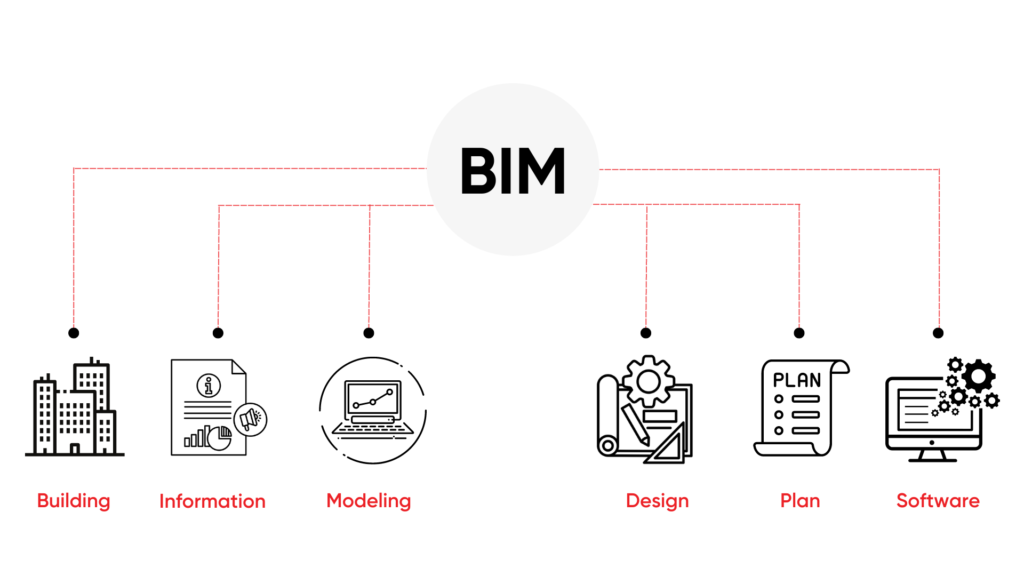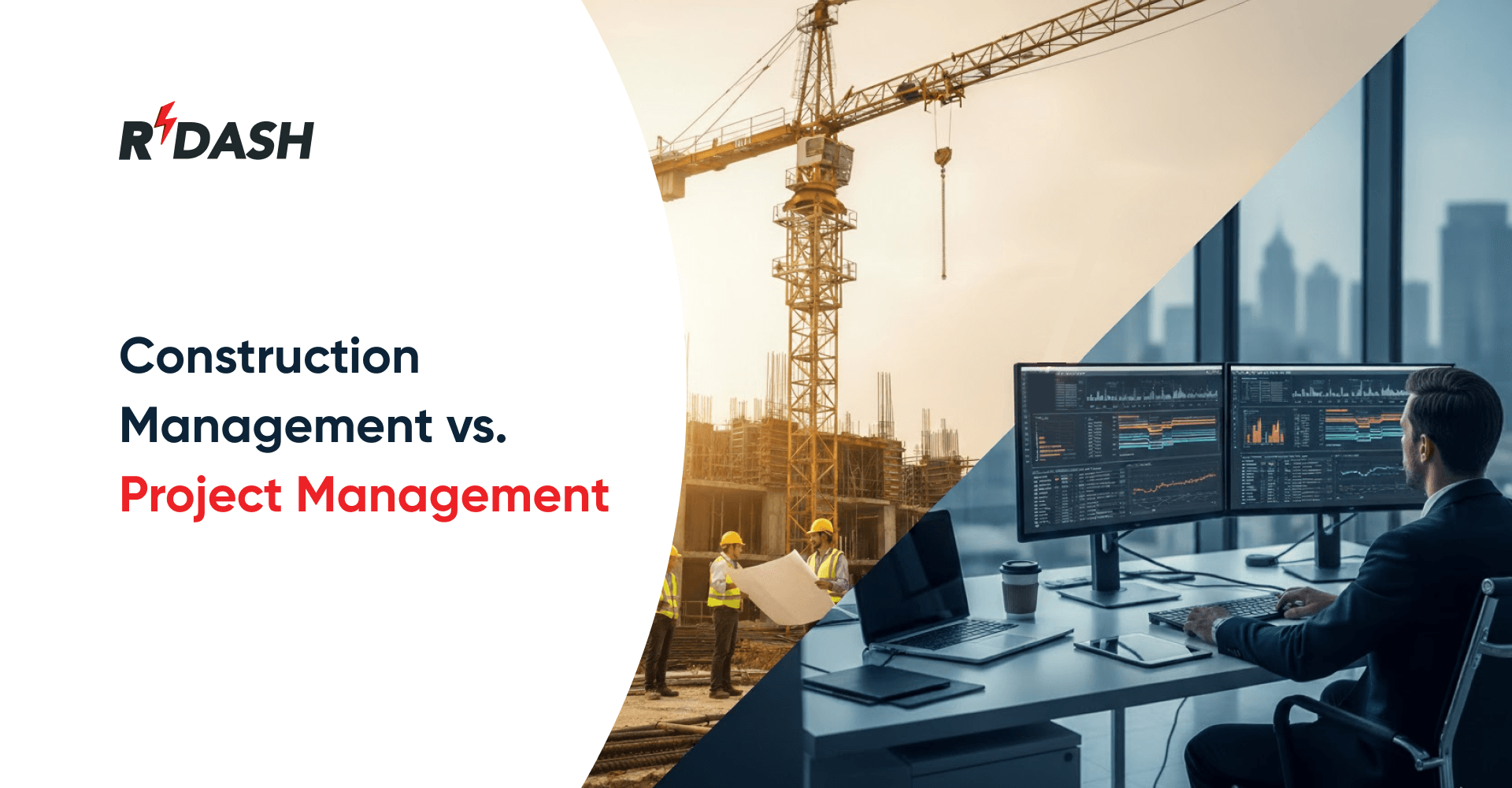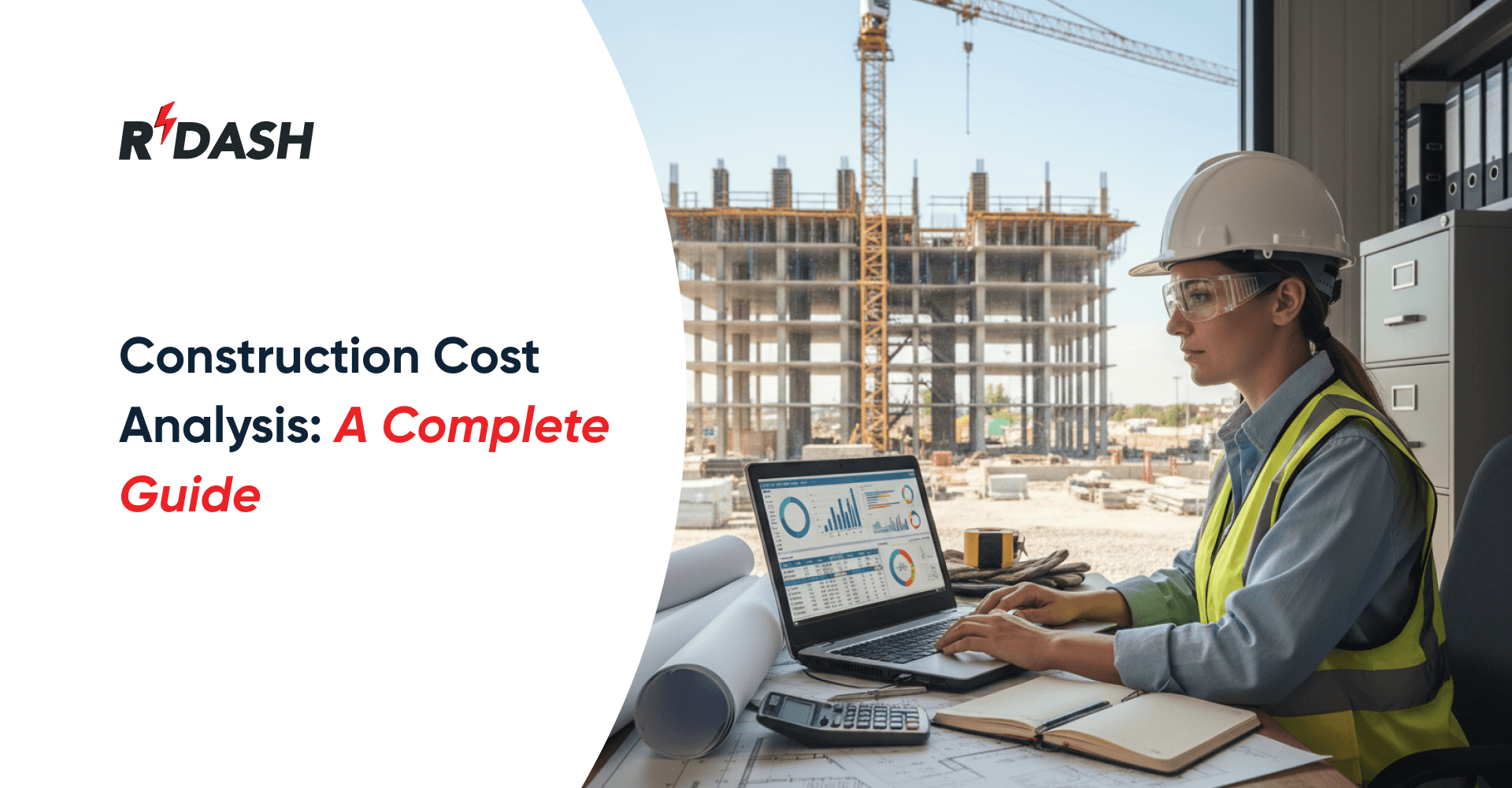Building Information Modeling (BIM) has revolutionized the construction industry by enhancing the way Building Information Modeling (BIM): Transforming the Construction Industry
The construction industry has always been a complex and multifaceted domain, characterized by numerous challenges, including project delays, cost overruns, design errors, and inefficient resource management. As the demand for more sustainable and efficient construction practices increases, innovative technologies such as Building Information Modeling (BIM) are reshaping the industry’s landscape. BIM is revolutionizing how construction projects are conceived, designed, built, and managed. This blog explores how BIM is transforming construction, providing real-world examples, and showcasing how our app, RDash, leverages BIM principles to streamline project management.

Understanding Building Information Modeling (BIM)
Building Information Modeling (BIM) is a digital representation of the physical and functional characteristics of a building or infrastructure. It serves as a comprehensive platform that integrates all aspects of a construction project, from design and documentation to construction and facility management. Unlike traditional 2D drafting methods, BIM provides a 3D model that is data-rich, allowing all stakeholders to visualize, analyze, and collaborate more effectively throughout the project’s lifecycle.
BIM is not just a technology; it is a process that promotes a more collaborative and integrated approach to construction. It helps in creating a virtual model of a building that can be used to plan, design, construct, and manage buildings more efficiently.
The Impact of BIM on the Construction Industry

- Improved Collaboration and Communication: BIM fosters enhanced collaboration and communication among project stakeholders. It provides a common platform where architects, engineers, contractors, and clients can work together, share information, and make informed decisions. This reduces misunderstandings, minimizes conflicts, and ensures that everyone is aligned with the project’s goals.
- Increased Efficiency and Reduced Costs: BIM allows for better planning and resource management, resulting in increased efficiency and reduced costs. By creating a detailed 3D model of the building, BIM helps in identifying potential design issues and conflicts before construction begins, reducing the need for costly rework and delays. Moreover, BIM facilitates more accurate cost estimation and budgeting, helping project managers stay within financial constraints.
- Enhanced Design Quality and Visualization: BIM enables the creation of highly detailed and accurate designs that can be visualized in 3D. This allows architects and engineers to experiment with different design options and make informed decisions. The ability to visualize the building in a virtual environment helps in identifying design flaws and optimizing the design for better performance and aesthetics.
- Streamlined Construction Processes: BIM supports the optimization of construction processes by providing a detailed plan of the project, including schedules, sequences, and workflows. It helps in better coordination among various teams, ensuring that construction activities are carried out efficiently and effectively. This results in faster project completion and reduced downtime.
- Risk Management and Safety: BIM enhances risk management by allowing for the simulation and analysis of various scenarios. It helps in identifying potential risks and challenges early in the project, enabling proactive measures to mitigate them. Additionally, BIM supports safety planning by providing detailed information about the site, hazards, and safety protocols.
- Sustainability and Green Building: BIM promotes sustainable construction practices by enabling the analysis of energy performance, material usage, and environmental impact. It helps in designing buildings that are more energy-efficient and environmentally friendly, contributing to the reduction of carbon footprints.
- Lifecycle Management: BIM extends beyond the construction phase, providing valuable data for the entire lifecycle of a building. It supports facility management by providing detailed information about building components, systems, and maintenance needs. This ensures that buildings are operated and maintained efficiently, reducing operational costs and extending the building’s lifespan.
Real-World Examples of BIM in Action

- The Burj Khalifa, Dubai: The Burj Khalifa, the world’s tallest building, is a prime example of BIM’s capabilities. BIM was used to manage the complex design and construction processes, coordinating between multiple stakeholders, optimizing material usage, and ensuring efficient scheduling. The use of BIM significantly reduced construction time and costs, making the project a remarkable success.
- Heathrow Terminal 5, London: The construction of Heathrow Terminal 5 utilized BIM to enhance collaboration among various contractors and subcontractors. The BIM model helped identify potential conflicts early, reducing errors and rework. The result was a project that was completed on time and within budget, with a high level of quality and precision.
- Sydney Opera House, Australia: A BIM model of the Sydney Opera House was created to manage its complex renovation and maintenance needs. The model provides detailed information about the building’s structure, systems, and components, enabling more efficient and effective facility management. The use of BIM has helped preserve this iconic landmark for future generations.
- Shanghai Tower, China: The Shanghai Tower, one of the tallest buildings in the world, utilized BIM for its design and construction. BIM was used to simulate various construction scenarios, optimize the building’s energy performance, and manage the project’s logistics and scheduling. The result was a highly efficient and sustainable building that sets new standards for green construction.
How Our App, RDash, Integrates BIM Principles
At RDash, we have developed an innovative app that leverages BIM principles to streamline construction management. Our app provides a comprehensive solution that covers all aspects of project management, from inception to completion, ensuring a seamless and integrated approach to construction.

- Recce: The first step in any construction project is a detailed reconnaissance (recce) of the site. Our app facilitates this process by capturing existing conditions, identifying potential challenges, and understanding the project’s requirements. The data collected during the recce phase is integrated into the BIM model, providing a comprehensive view of the project site and enabling better planning and decision-making.
- Design: RDash supports the design phase by allowing architects and engineers to create detailed digital models of the building. These models can be analyzed and simulated to identify potential design issues and optimize building performance. The app provides a collaborative platform where stakeholders can review and modify designs in real-time, ensuring that the final design meets all project requirements and expectations.
- BOQ (Bill of Quantities): Our app generates a detailed Bill of Quantities (BOQ) based on the BIM model, providing accurate estimates of materials, quantities, and costs. This helps in precise budgeting and cost management, reducing the risk of cost overruns. The BOQ is integrated with the ordering system, ensuring that the right materials are available at the right time, minimizing delays and waste.
- Order: RDash streamlines the procurement process by integrating the BOQ with the ordering system. It allows for efficient ordering of materials and equipment, ensuring that the project stays on schedule. The app provides real-time updates on the status of orders, helping project managers manage inventory and avoid shortages or surpluses.
- Work Progress: The app tracks the progress of construction in real-time, providing detailed information about the status of various tasks and activities. This helps in better planning and scheduling, reducing delays and improving overall productivity. Project managers can monitor progress against the schedule and make adjustments as needed to keep the project on track.
- Snags: RDash allows for the identification and management of snags (defects or issues) during construction. The app provides a platform for reporting, tracking, and resolving snags, ensuring that they are addressed promptly and efficiently. This helps in maintaining high-quality standards and avoiding costly rework.
- Financial Closure: Our app ensures a smooth financial closure by providing detailed information about project costs and expenditures. It helps in reconciling accounts, managing payments, and ensuring that the project is completed within budget. The app provides a transparent and auditable record of all financial transactions, reducing the risk of disputes and ensuring financial accountability.
- Project Manager Task Master: RDash serves as a task master for project managers, providing a comprehensive overview of the project and helping them manage tasks, resources, and schedules effectively. The app supports decision-making by providing real-time data and insights, enabling project managers to make informed decisions and keep the project on track.
The Future of BIM in Construction
The future of BIM in construction looks promising, with the technology expected to become more advanced and integrated into all aspects of the construction process. Here are some trends that are likely to shape the future of BIM:

- Integration with IoT and Smart Technologies: BIM is expected to integrate more closely with the Internet of Things (IoT) and other smart technologies, enabling real-time monitoring and management of building systems. This will allow for more efficient facility management and maintenance, reducing costs and improving building performance.
- Augmented and Virtual Reality: The use of augmented and virtual reality (AR/VR) in conjunction with BIM is likely to increase, providing more immersive and interactive experiences for stakeholders. This will help in better visualization and understanding of complex designs, improving decision-making and collaboration.
- Artificial Intelligence and Machine Learning: AI and machine learning are expected to play a significant role in the future of BIM, enabling more advanced analysis and simulation of building models. This will help in optimizing designs, predicting potential issues, and improving overall project outcomes.
- Blockchain Technology: Blockchain technology is likely to be integrated with BIM to provide more secure and transparent project management. It will enable better tracking of materials, contracts, and payments, reducing the risk of fraud and disputes.
- Sustainability and Green Building: BIM will continue to support sustainable construction practices by enabling more accurate analysis of energy performance, material usage, and environmental impact. This will help in designing buildings that are more energy-efficient and environmentally friendly.
Conclusion
Building Information Modeling (BIM) is revolutionizing the construction industry by providing a more collaborative, efficient, and sustainable approach to building design and construction. It offers numerous benefits, including improved design quality, cost and time savings, increased efficiency, and better risk management. BIM is not just a
technology; it is a transformative process that is reshaping the way we build and manage our infrastructure.
At RDash, we are committed to leveraging the power of BIM to enhance construction management. Our app provides a comprehensive solution that covers all aspects of project management, from recce and design to BOQ, order management, work progress, snags, financial closure, and project manager tasks. By integrating BIM principles into our app, we aim to provide a more efficient, transparent, and collaborative platform for construction management.
As the construction industry continues to evolve, BIM will play a crucial role in shaping its future. The integration of advanced technologies such as AI, IoT, AR/VR, and blockchain with BIM will further enhance its capabilities, providing new opportunities for innovation and growth. The future of construction is digital, and BIM is at the forefront of this transformation.






